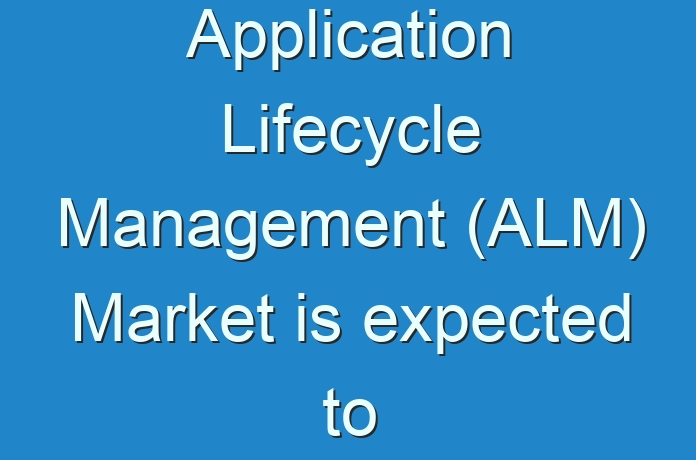
According to this report, the global application lifecycle management (ALM) market revenue stood at US$ 2,887.4 Mn in 2019 and is expected to reach US$ 5,701.9 Mn by 2027, at a CAGR of 8.9% during the forecast period from 2019 to 2027.
Application Lifecycle Management (ALM) Market – Definition
Application lifecycle management (ALM) software is used to coordinate and manage different stages of software development. As a result, software can be designed, delivered, and deployed faster, reducing time to market. ALM solutions have been adopted by companies in various developed economies with a view to maintaining their business agility and flexibility, as ALM increases the business efficiency by creating and enforcing standards across all related project stages, and performing more appropriate allocation of human and technological resources. The IT and telecom end-user segment acquired the majority share of the ALM market in the year 2019. It was also the fastest growing segment, projected to expand at a CAGR of 10.2% from 2019 to 2027. Rising technical as well as managerial challenges and variations in software with different standards in different regions have led to high adoption of ALM solutions among IT and telecom end-users.
For More Details, Request A Sample Report@ https://www.transparencymarketresearch.com/sample/sample.php?flag=S&rep_id=9257
In the future, the ALM market is expected to grow significantly in Asia Pacific due to fast technological development and population growth.
North America Application Lifecycle Management (ALM) Market
The U.S. is one of the biggest spenders in application lifecycle management (ALM) across the world. ALM market size of the U.S. is projected to reach US$ 1,356.9 Mn by 2027 at a CAGR of 8.9% during the forecast period. The North America application lifecycle management (ALM) market is expected to reach US$ 1,696.1 Mn by 2027 from US$ 684.7 Mn in 2019, rising at a rate CAGR of 9.2% during the forecast period. One of the key trends in the ALM market in North America is the adoption of Internet of Things (IoT) in ALMs. IoT has huge potential in developing economies, but is expected to have a higher overall value impact in advanced economies such as North America because of the higher value per use.
Key Growth Drivers of the Application Lifecycle Management (ALM) Market
- Rapid uptake of mobile devices, growth in number of browsers/platforms – Developing applications for multiple platforms involves many activities other than just code writing, which are referred to as DevOps (development + operations), or as ALM, throughout the application’s complete lifecycle. Activities include planning and tracking work, designing code, implementing, managing source code repository and continuous integration, running builds, testing, running various diagnostic forms in development and production areas, and monitoring the application performance and user behavior in real time
- Need for greater efficiency across teams and increased engineering productivity – ALM enables project timelines management as well as project delivery. It ensures that every requirement has been mapped with software capability. ALM tests the performance of the software throughout its lifecycle. ALM supports individuals, teams, and institutions in their quest to scale up tester and developer productivity. Furthermore, it extends the software lifecycle.
- Aging systems development lifecycle (SDLC) infrastructure – The SDLC model is used in project management and involves various stages in a system development project, from the initial study to the maintenance of the completed application. SDLC consists of a detailed plan that describes how the development, maintenance, and replacement of specific software is conducted. Complete structure of the software development process reduces the development time of the software. ALM helps to reduce time taken for the software development process which helps to increase the profitability of the company.





